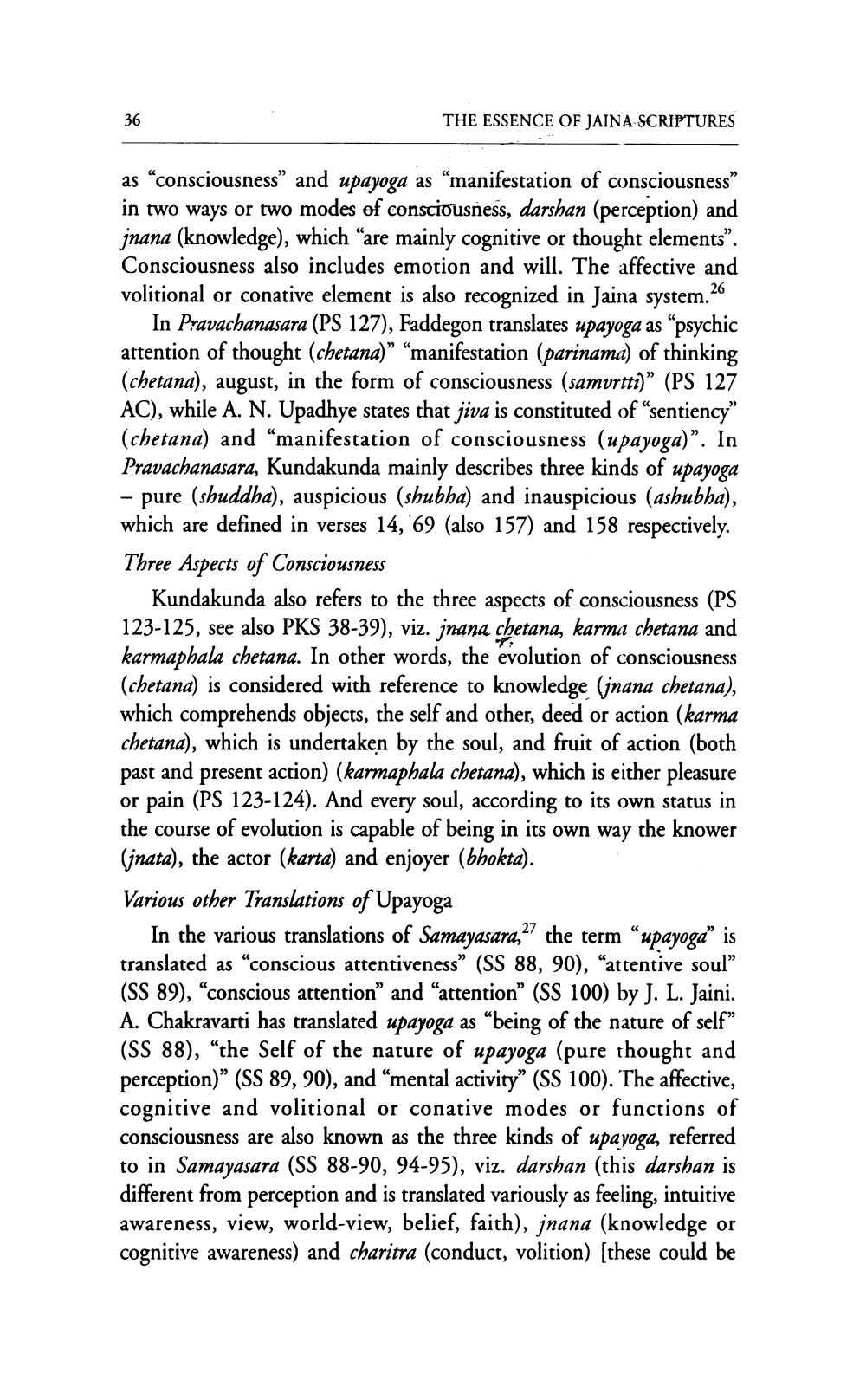________________
36
THE ESSENCE OF JAINA SCRIPTURES
as "consciousness" and upayoga as "manifestation of consciousness" in two ways or two modes of consciousness, darshan (perception) and jnana (knowledge), which "are mainly cognitive or thought elements". Consciousness also includes emotion and will. The affective and volitional or conative element is also recognized in Jaina system.26
In Pravachanasara (PS 127), Faddegon translates upayoga as "psychic attention of thought (chetana)" "manifestation (parinama) of thinking (chetana), august, in the form of consciousness (samvrtti)" (PS 127 AC), while A. N. Upadhye states that jiva is constituted of "sentiency" (chetana) and "manifestation of consciousness (upayoga)". In Pravachanasara, Kundakunda mainly describes three kinds of upayoga - pure (shuddha), auspicious (shubha) and inauspicious (ashubha), which are defined in verses 14, 69 (also 157) and 158 respectively. Three Aspects of Consciousness
Kundakunda also refers to the three aspects of consciousness (PS 123-125, see also PKS 38-39), viz. jnana chetana, karma chetana and karmaphala chetana. In other words, the evolution of consciousness (chetana) is considered with reference to knowledge (jnana chetana), which comprehends objects, the self and other, deed or action (karma chetana), which is undertaken by the soul, and fruit of action (both past and present action) (karmaphala chetana), which is either pleasure or pain (PS 123-124). And every soul, according to its own status in the course of evolution is capable of being in its own way the knower (jnata), the actor (karta) and enjoyer (bhokta).
Various other Translations of Upayoga
In the various translations of Samayasara,27 the term "upayoga" is translated as "conscious attentiveness" (SS 88, 90), “attentive soul" (SS 89), "conscious attention" and "attention" (SS 100) by J. L. Jaini. A. Chakravarti has translated upayoga as "being of the nature of self" (SS 88), "the Self of the nature of upayoga (pure thought and perception)" (SS 89, 90), and “mental activity" (SS 100). The affective, cognitive and volitional or conative modes or functions of consciousness are also known as the three kinds of upayoga, referred to in Samayasara (SS 88-90, 94-95), viz. darshan (this darshan is different from perception and is translated variously as feeling, intuitive awareness, view, world-view, belief, faith), jnana (knowledge or cognitive awareness) and charitra (conduct, volition) [these could be




